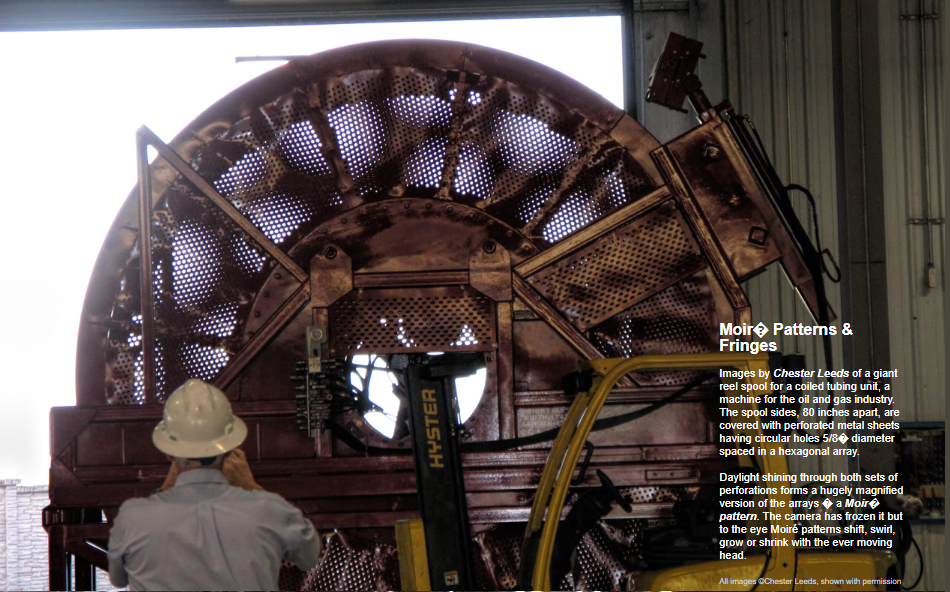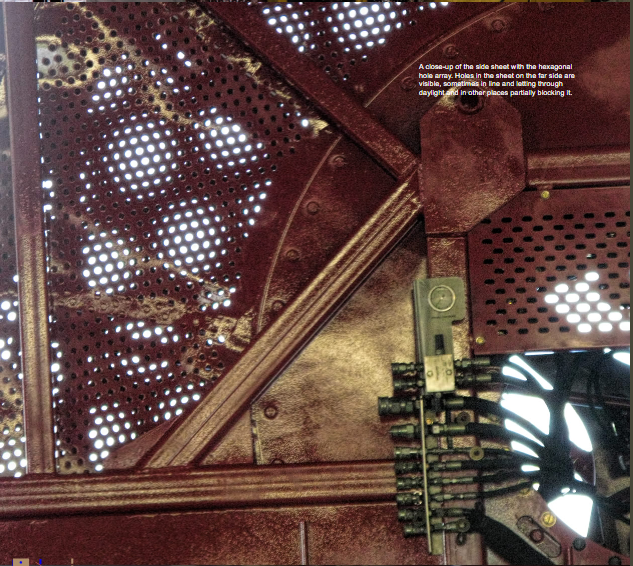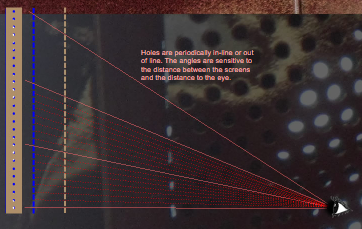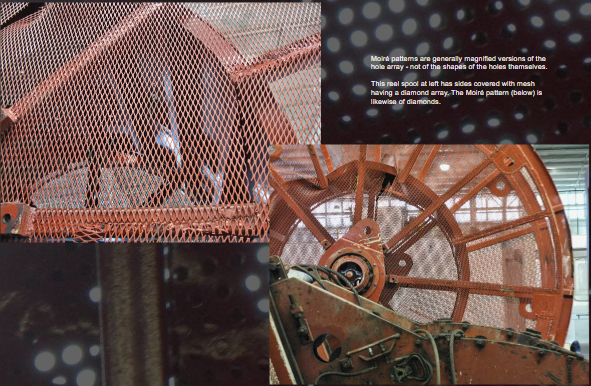Moiré Patterns - OPOD
Moiré Patterns: A Fascinating Optical Phenomenon
Have you ever noticed intricate patterns that seem to shift, swirl, and change before your eyes? These captivating patterns, known as Moiré patterns, are a mesmerizing optical phenomenon that occurs when two sets of regularly spaced lines or grids overlap. In this blog post, we will delve deeper into the world of Moiré patterns, exploring their formation, characteristics, and real-world examples.
Understanding Moiré Pattern Generation
Moiré pattern generation relies on the interaction between two sets of grids or lines. When these grids or lines are slightly misaligned, they create an interference pattern that gives rise to the visually stunning Moiré effect. The conditions for alignment or transmission occur periodically, resulting in the formation of the Moiré pattern.
To better understand this phenomenon, let's consider a simple example of two linear arrays of holes. When a line of sight passes through a hole in each screen, daylight is visible. Conversely, when the holes do not align at all, light is blocked, creating dark areas. These alternating areas of light and dark form the intricate Moiré pattern.
Sensitivity to Movement
One of the most intriguing aspects of Moiré patterns is their sensitivity to even the slightest movement. The position of the eye or camera plays a crucial role in determining the appearance of the pattern. The tiniest shift can dramatically alter the pattern, causing it to shift, swirl, grow, or shrink. This sensitivity adds an element of dynamism and unpredictability to Moiré patterns, making them truly captivating to observe.
Magnified Versions of Original Arrays
Moiré patterns are generally magnified versions of the underlying grid or line array. They do not replicate the shapes of individual elements but instead amplify the overall pattern. For example, if a surface is covered with a mesh featuring a diamond array, the resulting Moiré pattern will also consist of diamonds.
Real-World Examples
Moiré patterns can be observed in various everyday scenarios, often creating visually stunning effects. One such example is the giant reel spool for a coiled tubing unit in the oil and gas industry. This spool features perforated metal sheets with circular holes arranged in a hexagonal array. When daylight shines through these perforations, it forms a magnified Moiré pattern that appears to shift and transform with the viewer's perspective.
Another instance where Moiré patterns manifest is in the realm of textiles. Fabrics with closely spaced patterns or grids can create Moiré effects when layered or folded. These effects are often utilized by designers to add depth and texture to their creations, resulting in visually striking garments.
Exploring the Beauty of Moiré Patterns
The ever-changing nature of Moiré patterns makes them a captivating subject of exploration and artistic expression. Artists and photographers have embraced these patterns, incorporating them into their works to create visually stunning compositions. By manipulating the alignment and spacing of grids or lines, they can achieve unique and mesmerizing Moiré effects that capture the viewer's attention.
Conclusion
Moiré patterns are a captivating optical phenomenon that arises when two sets of grids or lines overlap, creating intricate and dynamic patterns. Their sensitivity to movement and ability to magnify underlying arrays make them truly fascinating to observe. From industrial machinery to textiles and artistic expressions, Moiré patterns find their way into various aspects of our lives, adding an element of intrigue and beauty. So next time you come across a mesmerizing pattern that seems to dance before your eyes, take a moment to appreciate the intricate wonders of Moiré patterns.

Moir� Patterns & Fringes
Images by Chester Leeds of a giant reel spool for a coiled tubing unit, a machine for the oil and gas industry. The spool sides, 80 inches apart, are covered with perforated metal sheets having circular holes 5/8� diameter spaced in a hexagonal array.
Daylight shining through both sets of perforations forms a hugely magnified version of the arrays � a Moir� pattern. The camera has frozen it but to the eye Moiré patterns shift, swirl, grow or shrink with the ever moving head.
All images ©Chester Leeds, shown with permission

A close-up of the side sheet with the hexagonal hole array. Holes in the sheet on the far side are visible, sometimes in line and letting through daylight and in other places partially blocking it.

Holes are periodically in-line or out of line. The angles are sensitive to the distance between the screens and the distance to the eye.
Moiré pattern generation
The two perforated screens act as masks that in places open to reveal daylight and in other places block it.
Daylight is visible when a line to the eye passes through a hole in each screen. Angular directions where the holes do not align at all have light blocked and appear dark.
The conditions for alignment or transmission occur periodically with the result that a moiré pattern forms. The pattern generation is most easily visualised for a pair of simple linear arrays of holes as at left.
The condition of transmission through a given pair of holes in the two screens is extremely sensitive to the position of the eye or camera. The slightest movement shifts the pattern dramatically.

Moiré patterns are generally magnified versions of the hole array - not of the shapes of the holes themselves.
This reel spool at left has sides covered with mesh having a diamond array. The Moiré pattern (below) is likewise of diamonds.
Note: this article has been automatically converted from the old site and may not appear as intended. You can find the original article here.
Reference Atmospheric Optics
If you use any of the definitions, information, or data presented on Atmospheric Optics, please copy the link or reference below to properly credit us as the reference source. Thank you!
-
<a href="https://atoptics.co.uk/blog/moir-patterns-opod/">Moiré Patterns - OPOD</a>
-
"Moiré Patterns - OPOD". Atmospheric Optics. Accessed on April 19, 2024. https://atoptics.co.uk/blog/moir-patterns-opod/.
-
"Moiré Patterns - OPOD". Atmospheric Optics, https://atoptics.co.uk/blog/moir-patterns-opod/. Accessed 19 April, 2024
-
Moiré Patterns - OPOD. Atmospheric Optics. Retrieved from https://atoptics.co.uk/blog/moir-patterns-opod/.